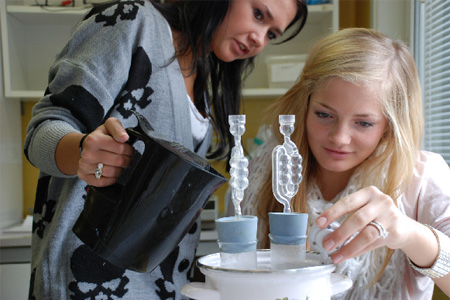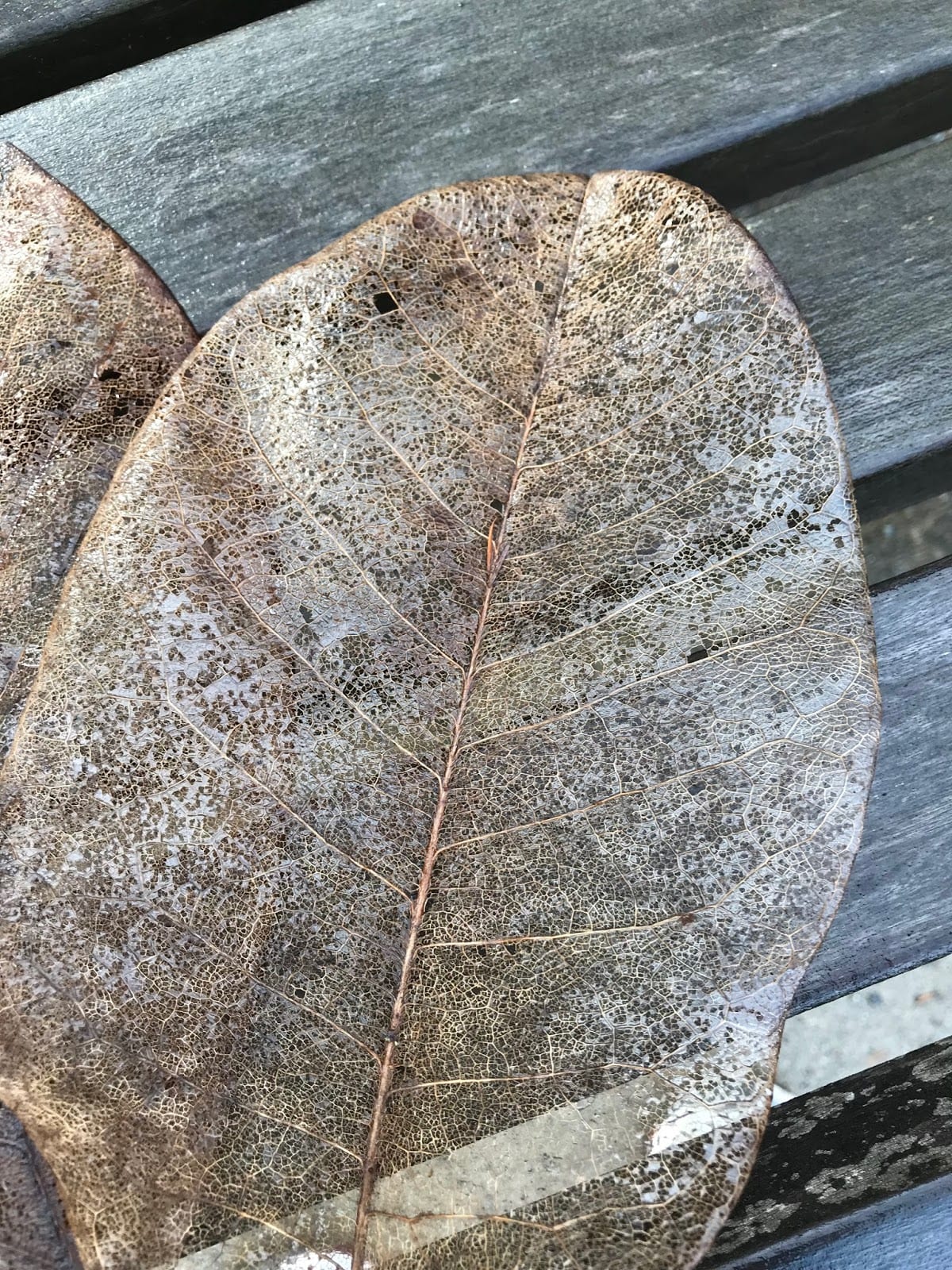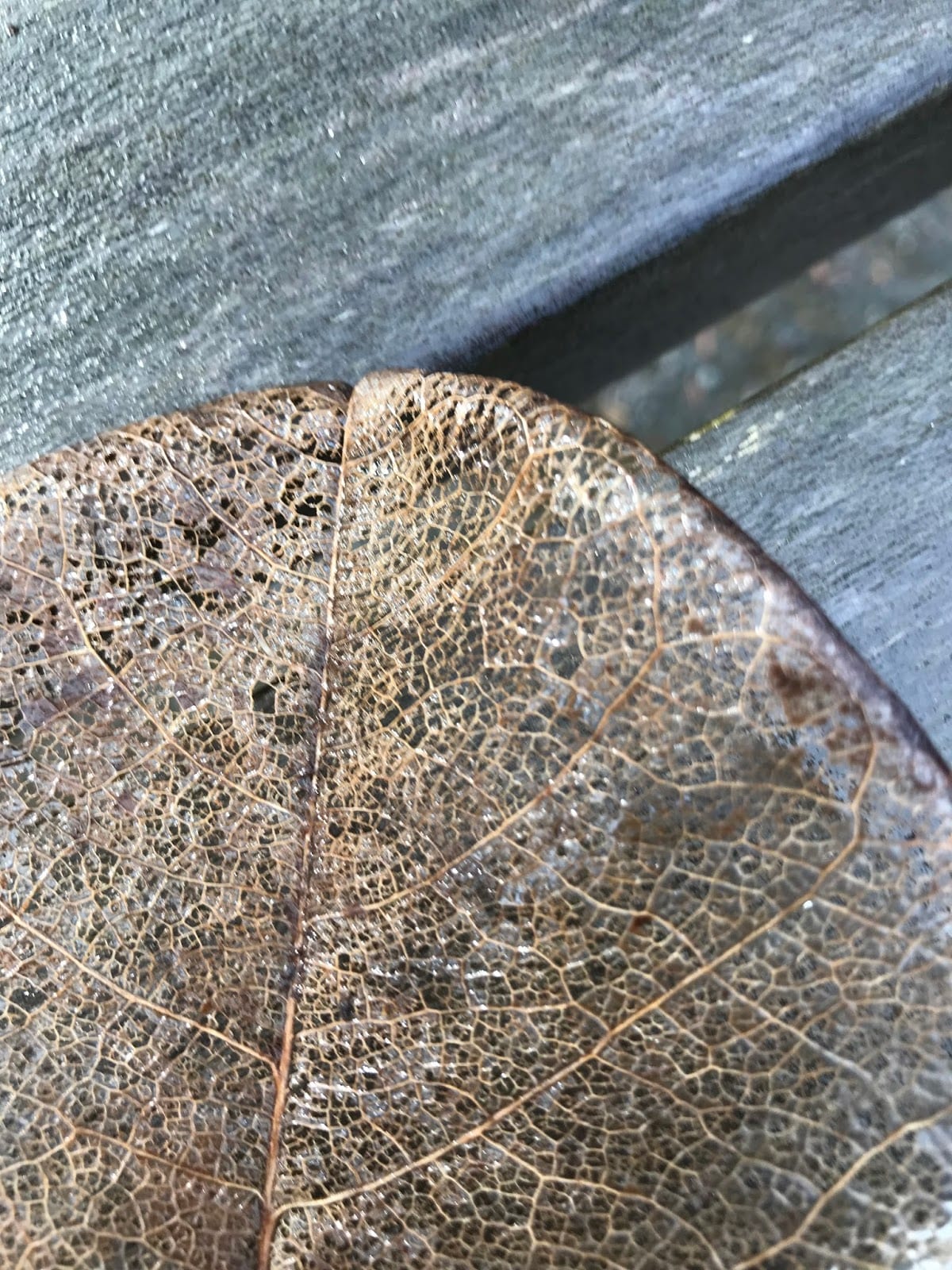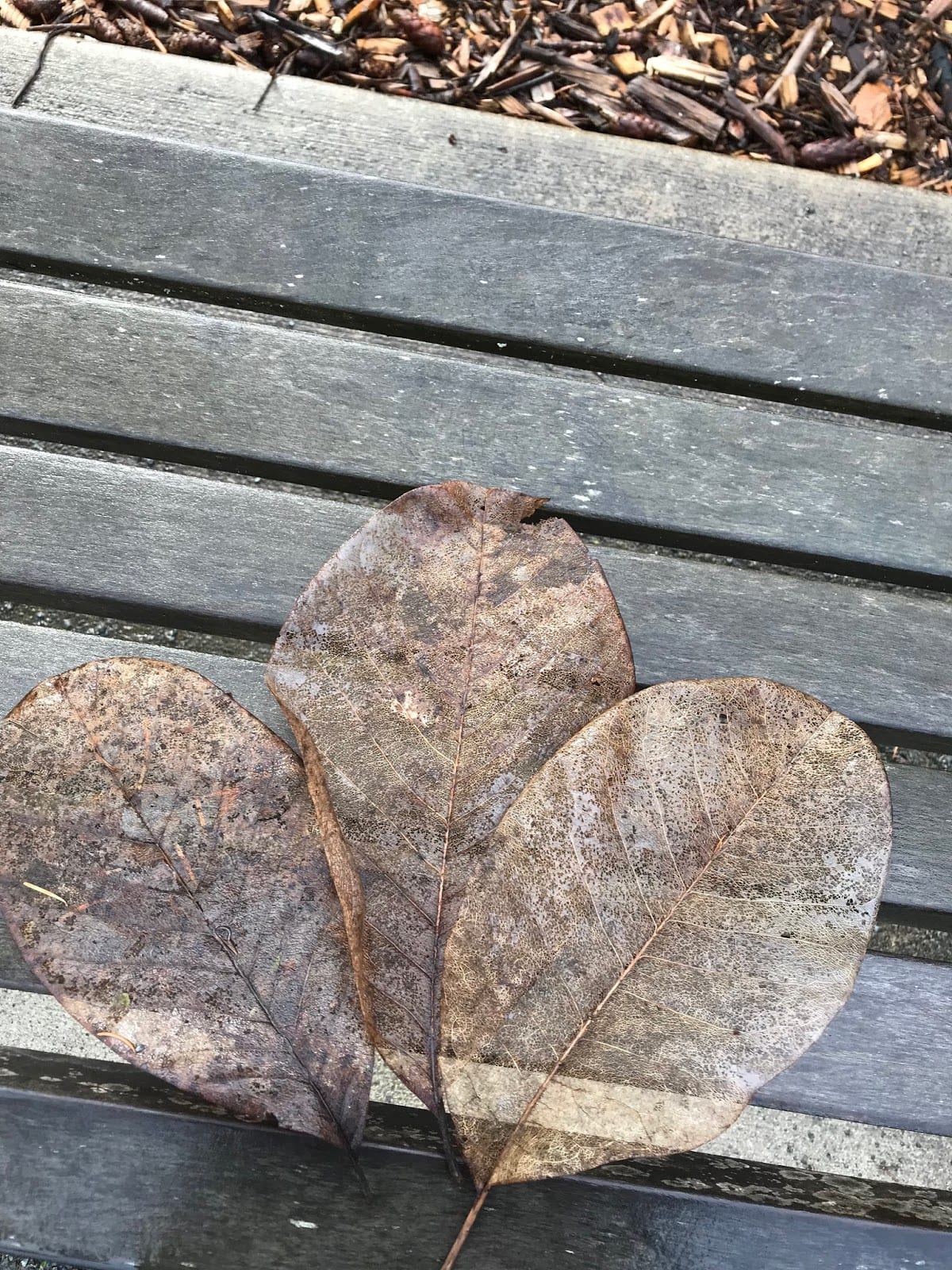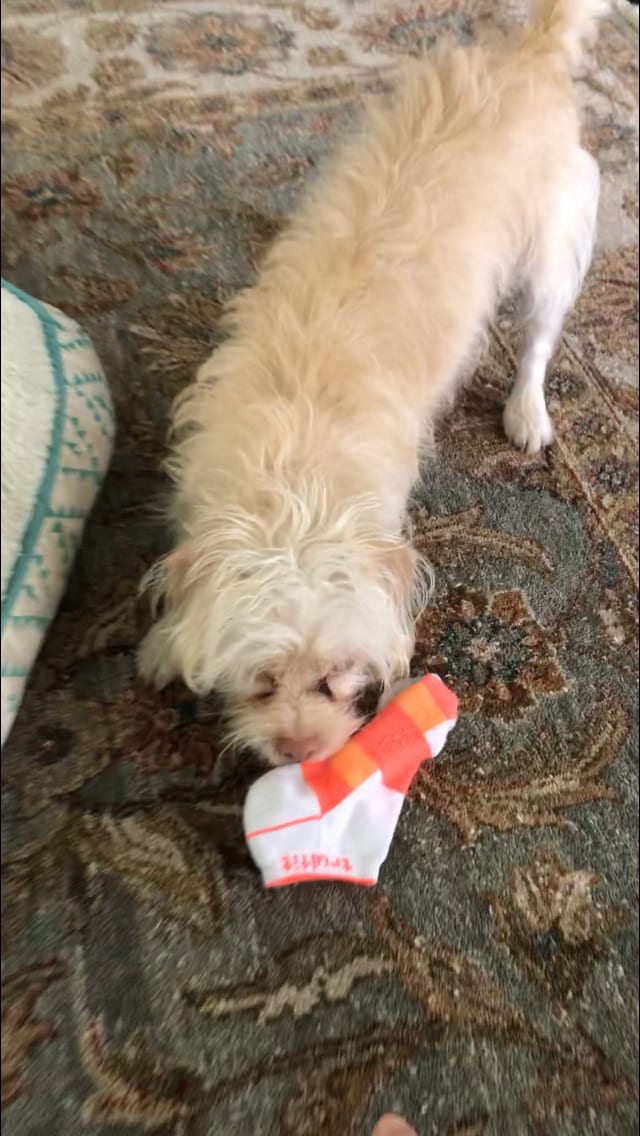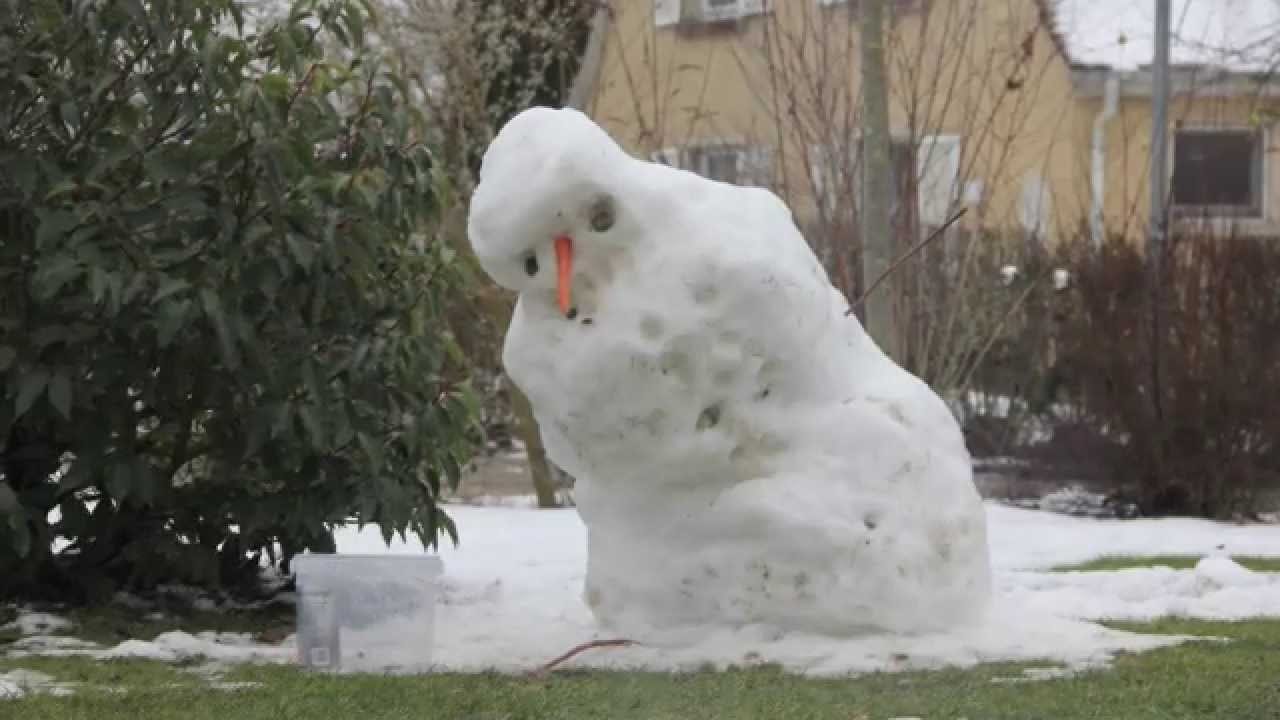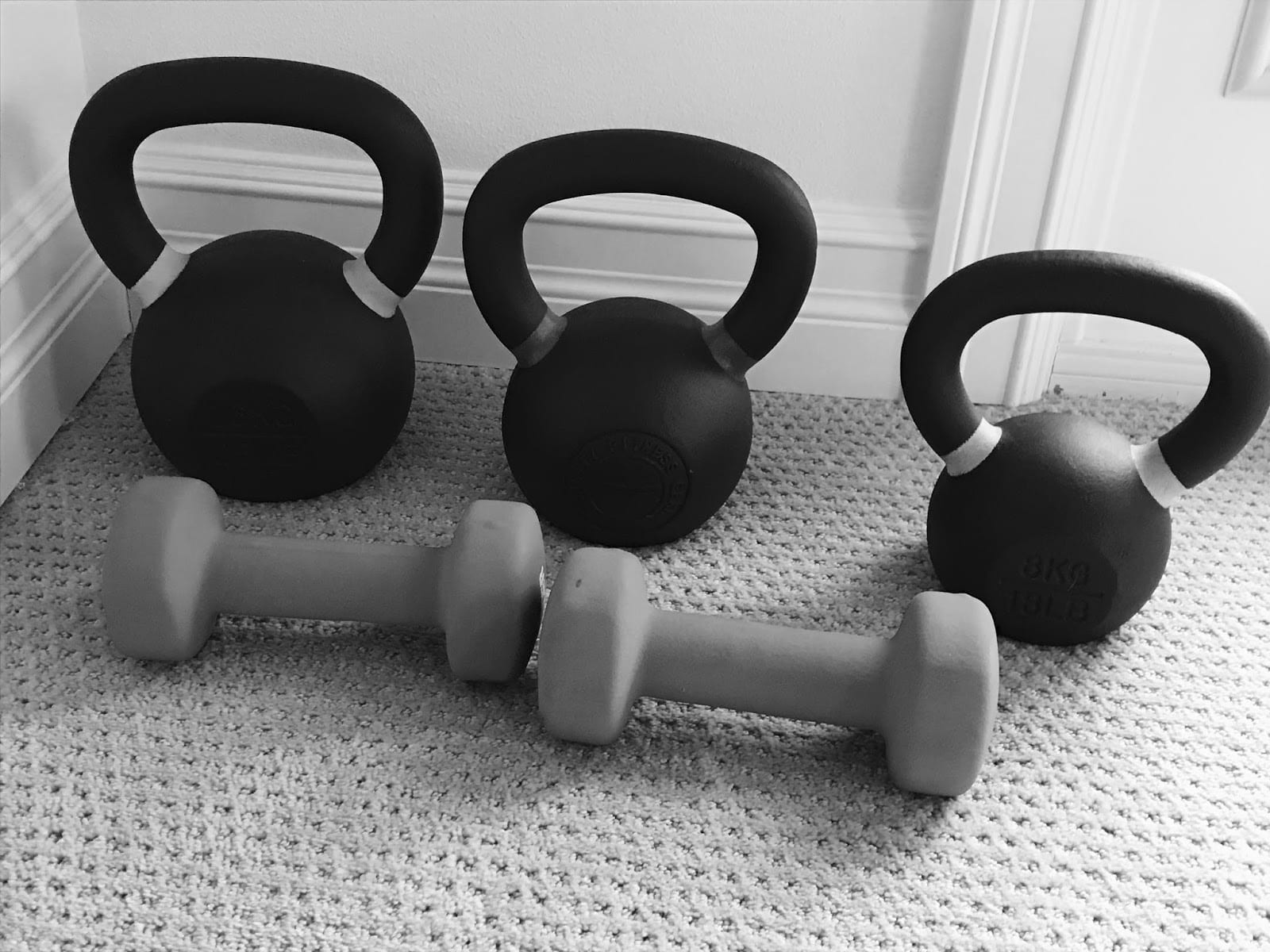Sometimes, I have a view in to PTSD that I haven’t ever seen before. Generally, at this point in my life, it’s a pretty distanced view, and for that I am grateful.
As I was getting ready to take the dogs for a walk this morning, I was putting my shoes and socks on and having to contend with Chivito to keep possession of both socks. He loves nothing more than watching me separate a pair of socks and waiting until I begin to put the first one on and my attention is diverted so he can snatch the other sock and run away with it to a corner of the room. As I chased him to retrieve it, I was suddenly reminded of something I used to muse on as a kid.
Is it better to put both socks on first and then start on your shoes, or one sock and one shoe first and then the other sock/shoe combo?
Seems fairly philosophical, except that, as a kid, when you’re living in fear, it’s not. It’s practical. I always chose one sock and one shoe and then the other pair and here is why – if I got interrupted halfway through and had to run, at least one foot would be entirely covered. If I did both socks first and had to run, those socks wouldn’t protect my feet for long as I ran away, but, I reasoned, I could always give the bare foot a break by hopping on the foot with the shoe for a little bit if necessary.
These days I can look back at the kid who thought that way most mornings and smile with compassion. I no longer feel that sharp spike of adrenaline in my chest as I imagine what she was afraid of. I know I’m safe these days. I am filled with appreciation for that little girl’s survival skills and for the fact that I made it through that time and am no longer forced to think that way.
I wonder what else that little girl could have done with her time and intellect if she hadn’t been so afraid all the time, so focused on fight or flight, and it makes me determined to do what I can to keep other kids from living that way.
This is a pretty ham-handed segue in to a discussion about gun control, but here you have it: this is one of the reasons I find it unconscionable that there are lawmakers considering adding more guns to the landscape of our kids’ lives. Between active-shooter drills and actual mass shootings in schools, churches, and other public places, our kids are traumatized, and we are letting it happen. Consider this post by a teacher named Danae Ray (taken from Facebook postings made by her FB friends – I don’t know her):
“Today in school we practiced our active shooter lockdown. One of my first graders was scared and I had to hold him. Today is his birthday. He kept whispering “When will it be over?” into my ear. I kept responding “Soon” as I rocked him and tried to keep his birthday crown from stabbing me.
I had a mix of 1-5 graders in my classroom because we have a million tests that need to be taken. My fifth grader patted the back of the 2nd grader huddled next to him under a table. A 3rd grade girl cried silently and clutched the hand of her friend. The rest of the kids sat quietly (casket quiet) and stared aimlessly in the dark.
As the”intruder” tried to break into our room twice, several of them jumped, but remained silently. The 1st grader in my lap began to pant and his heart was beating out of his chest, but he didn’t make a peep. Eventually, the principal announced the lockdown was lifted.
I turned on the lights, removed the table from in front of the door, opened the blinds and announced “Let’s get back to work. ” I was greeted with blank faces… petrified faces…. tear stained faces… confused faces… elated faces…and one “bitch REALLY?” face.
This is teaching in 2018. And no… I don’t want a gun.”
#teacherlyfe
Now consider those children coming to school every morning, passing through metal detectors staffed by men and women with guns. Think about what it must take to walk through the halls of school with armed personnel in your periphery. Think about what it might feel like to be a child of color, whose family history might be peppered with stories of police officers using undue force. Imagine how incredibly difficult it might be to focus on what your teacher is saying or relax enough to joke with your friends or cut up in the lunchroom.
Think about what it would be like, as you get older and begin to draw conclusions based on subtle societal cues, and you notice that your teachers are working two or three jobs just to afford their rent and your classmates are holding bake sales and car washes to raise money for field trips or band uniforms, but the government seems to have plenty of money for school police officers and ammunition and bullet proof vests. What would your conclusions be about where our priorities lie?
Human beings can’t learn when they are in fear-mode. They can only react. Schools need to be a place of learning. They need to be safe places to experiment, and they should be places of joy. In order to create the best conditions for creative thought, problem-solving, and collaboration, we need teachers who are not afraid and who feel as though their efforts are appreciated and well-rewarded. We need students who are well-nourished, relaxed, and who feel safe and optimistic.
Banning assault weapons (or whatever you choose to call them – I know there is some petty argument about whether bump stocks or AR-15s should be called “assault weapons” – but I’m clear on the fact that these are not simple hunting rifles unless you’re hunting human beings) is not an affront to anyone’s Second Amendment rights. Banning assault weapons is simply a way to incrementally increase the safety and security of every single person in this country. Is it a perfect solution? No. That doesn’t exist. Is it a key part of the puzzle? Yes. It is. And if we can take that step toward reducing the amount of fear our children have as they simply get dressed in the morning to go to school, it’s the least we can do.
#guncontrolnow #notonemore #neveragain


